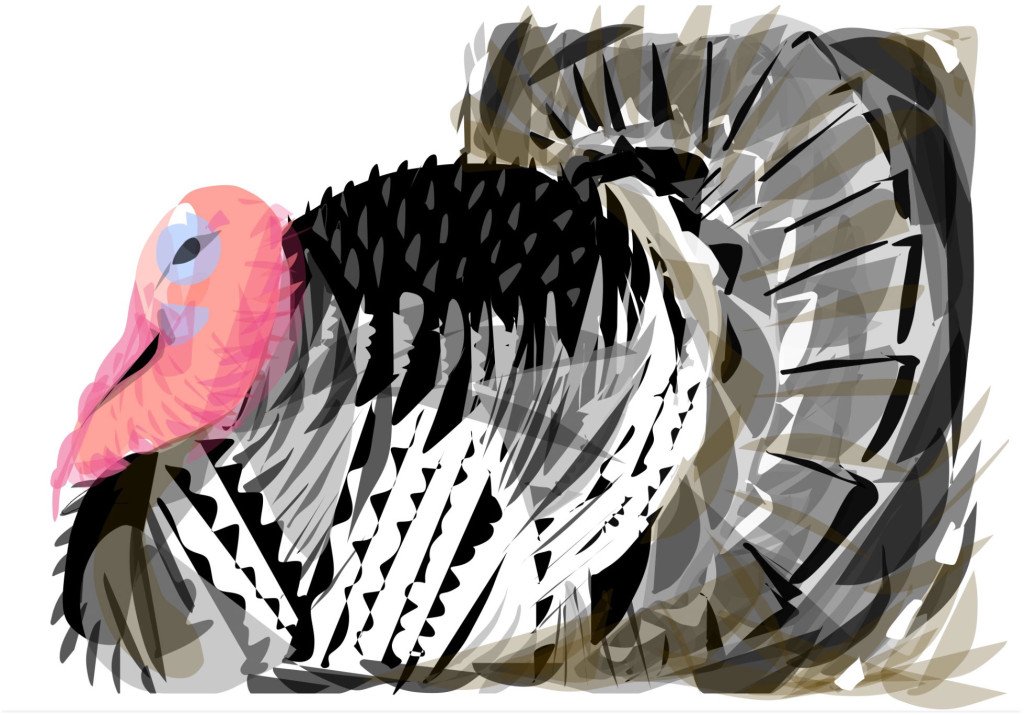The Wonderful Creatures of Mudchute Farm: Turkeys
I don’t mean to be rude, but turkeys are really strange to look at and also quite amazing.
The bit of loose flesh that hangs from the forehead to their beak is called a snood, and the bit beneath their beak is called a wattle. You can tell how the bird is doing by looking at the colour of these fleshy flaps. If the male turkey is trying to attract a mate then the skin is bright red, if they are scared then they turn blue and when they are not well the flesh becomes pale.
Wild turkeys can fly quite fast, about 50 miles an hour, but only for a very short distance, about 100 yards. But the turkeys that have been specially bred to be eaten by people are much too big and heavy to fly at all. On land turkeys can run at speeds of up to 25 miles an hour. There are also reports that wild turkeys can swim by spreading out their big fan shaped tails and kicking their legs.
An interesting fact about poo. Male turkeys poo is shaped like a candy cane and female poo is like a spiral.
Turkeys didn’t originate in the country of Turkey at all. What seems to have happened is that hundreds of years ago English people started to eat what they thought of as a very yummy bird which was a guinea fowl from Madagascar. The people trading these birds were from Turkey so the English assumed that the birds were too. Then, years later, Spanish people went to America and discovered that wild turkeys tasted like those guinea fowl and so they got called turkeys as well. Not at all confusing.
They are really clever birds about some things, they can recognise each other by voices, they plan ahead, know their territory really well and recognise patterns.From the first moments they hatch from their eggs the young ones are able to walk and run and find their own food and are covered in soft feathers. All the adults have to do is to defend their ‘poults’, (young). They take this work seriously and sometimes start defensive fights with their own reflections.

